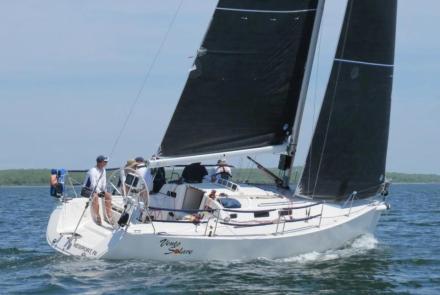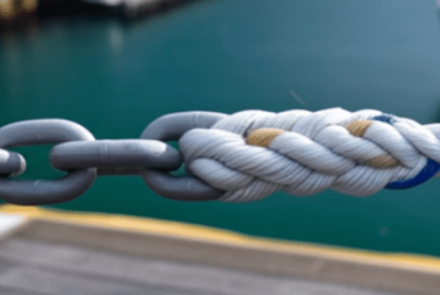Anchor at the Ready
Several decades ago, entering Morro Bay around sunrise, I was at the helm of a 30’ wooden ketch while the rest of the crew slept below. It was near a full moon, and the boat was bucking about a 3-knot ebb with her 4.5 knots of speed through the water. The red #4A buoy was well to starboard, but it became more and more obvious that the boat had slowly come to a halt, while the Atomic Four continued to hum encouragingly. The water was clear enough, and shallow enough, that I could see the ripples in the sand 4’ below the cockpit, and since the ketch drew 4’, it was an interference fit.
Not wishing to be known as the guy who ran aground, I backed off on the throttle slowly, so as not to wake the crew. Slowly, the ketch backed up as the current pushed it, stern-first, back out to sea. When I thought I had backed up enough, I altered course to port and sought deeper water. The rest of the trip into the bay was uneventful. It was an important lesson: no matter how accurately the channel markers may be placed originally to denote a channel, harbors slit up and the channel may be elsewhere.
Fast forward 30 years or so, and I was entering the same harbor on a blustery afternoon, only this time in Randy Repass’s Santa Cruz 40, ProMotion. As we reached into Morro Bay, I told the crew in the cockpit about my lesson learned when I was 18. My story was interrupted by a sudden deceleration, as the boat hit the same sandbar and swung around into the wind. The #4A buoy stared at me from about 100 feet to starboard.
My crew quickly brought a lunch hook on deck consisting of a 5# Danforth Hi-Tensile anchor and about 200’ of 3/8” nylon line. We were able to flag down a returning fishing boat and they obligingly pulled the anchor to windward (and, thankfully towards the center of the channel), where they dropped the little anchor. We took up tension on the anchor rode, and even though it stretched dramatically, the boat made a small amount of progress towards deeper water as each swell passed by. In less than 10 minutes we had kedged off the sandbar, boat intact, but egos in tatters.
Having a small anchor and rode that is ready for immediate deployment is wonderful seamanship rule for any vessel.
Having a small anchor and rode that is ready for immediate deployment is wonderful seamanship rule for any vessel. In fact, the anchor doesn’t have to be small, but it’s often handy to have an anchor that can be rowed, or swum, or even thrown into deeper water; options that may be impossible with a 45 or 60 pound anchor. The stretch in the anchor line can work in your favor, even if it seems overly elastic, since each time the boat lifts off the bottom for even a second, it will be tugged forward a small amount, and then the rode can be adjusted again.
On ProMotion, which didn’t have the convenience of a windlass, we ran the anchor line through a snatch block on the bow, then back along the side deck to a primary sheet winch in the cockpit. Not ideal, perhaps, but we could keep tension on the rode, and keep the bow headed towards deeper water, with each passing swell.
Which anchor to use? There are few arguments that are more divisive among sailors than which anchor is better, but I think many would agree that some anchor designs just don’t scale well when they are too small. A small CQR, for example, is pretty ineffective. My experience has shown that small Hi-Tensile and Fortress anchors, as well as the small Manson Supreme and Rocna designs are effective, even when they weigh 10# or less. What’s more important, though, is your ability to get them into the water, in the correct direction, in the least amount of time.




